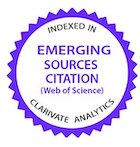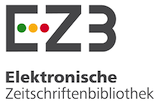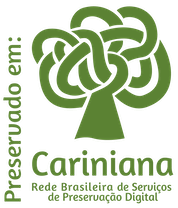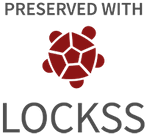Dietas para reprodutores de Macrobrachium acanthurus: avaliação espermática
DOI:
https://doi.org/10.1590/1809-6891v21e-60022Resumo
A aplicação de biotecnologias na reprodução animal tem possibilitado produzir formas jovens em quantidade e qualidade. O aumento da quantidade de gametas viáveis produzidos pelos reprodutores, mediante uma dieta ideal, entre outros fatores, pode garantir uma maior produção. Assim, o objetivo deste trabalho foi determinar o efeito de três dietas quanto à sobrevivência espermática de Macrobrachium acanthurus. Para tanto, 24 machos de M. acanthurus foram utilizados, sendo distribuídos ao acaso e de forma igual entre os tratamentos. As dietas foram compostas por 100% de alimento fresco (músculo de peixe e lula - 14% de proteína), 100% de alimento seco (ração comercial - 50% de proteína) e uma mescla dessas dietas contendo 30% de proteína. Os espermatóforos foram extraídos por eletroestimulação a cada 15 dias, sendo o controle aqueles obtidos diretamente da natureza. Não houve diferença significativa entre as dietas quando comparado os pesos dos camarões e dos espermatóforos. A alimentação 100% fresca proporcionou o melhor desempenho para a sobrevivência espermática.
Palavras-chave: Caridae; camarão canela; nutrição; esperma
Downloads
Referências
Camacho ME, Álvarez F, Villalobos JL. Palaemonidae (camarones de río, langostinos). In: Soriano, E.G.; Dirzo, R. e Evogt, R.C. Natural History of the Tuxtlas. Instituto de Biología-UNAM, Instituto de Ecología-UNAM, CONABIO, México; 1997. p. 411-414. English.
Coelho PA, Ramos-Porto M. Malacostraca - Eucarida - Caridae (Alpheoidea Excluded). In: Young, PS. Catalogue of Crustacea of Brazil. Museu Nacional, Rio de Janeiro, Brazil. 1998. p. 325-350. Portuguese.
Torati L, De Grave S, Page T, Anker A. Atyidae and Palaemonidae (Crustacea: Decapoda: Caridea) of Bocas del Toro, Panama. Check List. 2011;7(6):798-805. English.
Valenti WC, Mello JTC, Lobão VL. The fecundity in Macrobrachium acanthurus (Wiegmann, 1836) of the Ribeira de Iguape river (Crustacea, Decapoda, Palaemonidae). Revista Brasileira de Zoologia. 1989;6(1):9-15. Portuguese.
Arcos-Ortega GF. Physiological and genetic analysis of reproductive performance of white shrimp Litopenaeus vannamei [Tese]. La Paz, Baja California Sur, México: Centro de Investigaciones Biológicas del Noroeste; 2004. 244 p. [Acesso 2013 Out. 22] Disponível em: http://www. oceandocs.org/bitstream/handle/1834/3524/arcos_g.pdf?sequence=1 Espanish.
» http://www. oceandocs.org/bitstream/handle/1834/3524/arcos_g.pdf?sequence=1
Browdy CL. A review of reproductive biology of Penaeus species: Perspectives on controlled shrimp maturation systems for high quality nauplii production. In: Wyban J. Proceedings of the special session on shrimp farming. World Aquaculture Society, Baton Rouge, Los Angeles, USA. 1992. p. 22-51.
Meunpol O, Meejing P, Piyatiratitivorakul S. Maturation diet based on fatty acid content for male Penaeus monodon (Fabricius) broodstock. Aquaculture Research. 2005;36(1):1216-1225. English.
Shailender M, Suresh Babu CH, Krishna PV. Determine the competence of different fresh diets to improve the spermatophore superiority of giant black tiger shrimp, Penaeus monodon (Fabricius, 1798). International Journal of Bioassays. 2012;1(12):170-176. English.
Bray WA, Lawrence AL. Reproduction of Penaeus species in captivity. In: Fast AW, Lester LJ. Marine Shrimp Culture: principles and practices. Elsevier, New York, USA. 1992. p. 93-171. English.
Alfaro-Montoya J, Lozano X. Development and deterioration of spermatophores in pond-reared Penaeus vannamei Journal of the World Aquaculture Society. 1993;24(4):522-529. English.
Samuel MJ, Kannupandi TY, Soundarapandian P. Nutritional effects on male reproductive performance in the freshwater prawn Macrobrachium malcolmsonii (H. Milne Edwards). Aquaculture. 1999;172(1):327-333. English.
Díaz AC, Fernandez-Gimenez AV, Harán NS, Fenucci JP. Reproductive performance of male Argentine red shrimp Pleoticu muelleri Bate (Decapoda, Penaeoidea) in culture conditions. Journal of the World Aquaculture Society. 2001;32(2):236-242. English.
Harlioglu MM, Farhadi A, Gür, S. Determination of sperm quality in decapod crustaceans. Aquaculture. 2018;490(1):185-193. English.
Perez-Velazquez M, Lawrence AL, Gatlin DM, González-Félix ML, Bray WA. Replacement of fresh dietary components by a dry feed for successful maturation of male Litopenaeus vannamei (Boone) broodstock. Aquaculture Research. 2002;33(1):1901-1905. English.
Goimier Y, Pascual C, Sánchez A, Gaxiola G, Sánchez A, Rosas C. Relation between reproductive, physiological, and immunological condition of Litopenaeus setiferus pre-adult males fed different dietary protein levels (Crustacea, Penaeidae). Animal Reproduction Science. 2006;92(1): 193-208. English.
Coman GJ, Arnold SJ, Callaghan TR, Preston NP. Effect of two maturation diet combinations on reproductive performance of domesticated Penaeus monodon Aquaculture. 2007;263(1):75-83. English.
Leelatanawit R, Uawisetwathana U, Khudet J, Klanchui A, Phomklad S, Wongtripop S, Angthoung P, Jiravanichpaisal P, Karoonuthaisiri N. Effects of polychaetes (Perinereis nuntia) on sperm performance of the domesticated black tiger shrimp (Penaeus monodon). Aquaculture. 2014;433(1):266-275. English.
Braga AL, Nakayama CL, Martins JG, Colares EP, Wasielesky Jr. W. Spermatophore quality of the pink shrimp Farfantepenaeus paulensis (Decapoda, Dendrobranchiata) broodstock fed with different maturation diets. Aquaculture. 2010;307(1):44-48. English.
Memon AJ, Ikhwanuddin M, Talpur AD, Khan MI, Fariddudin MO, Safiah J, Abol-Munafi AB. To determine the efficiency of different fresh diets in improving the spermatophore quality of banana shrimp Penaeus merguiensis (De Man, 1888). Journal of Animal and Veterinary Advances. 2012;11(9):1478-1485. English.
Pérez-Rodríguez JC, Gómez-Gutiérrez J, López-Greco LS, Cortés-Jacinto E. Spermatophore production and sperm quality of the river prawn Macrobrachium americanum Spence Bate, 1868 fed with different diets. Aquaculture Research. 2019;50(1):3117-3129. English.
Harrison K. Broodstock nutrition and maturation diets. In: D'Abramo LR, Conklin DE, Akiyama DM. Crustacean nutrition. Advances in World Aquaculture. The World Aquaculture Society, Baton Rouge, USA. 1997. p. 390-408. English
Harrison, K. The role of nutrition in maturation, reproduction and embryonic development of decapod crustaceans. A review. Journal of Shellfish Research. 1990;9(1):1-28. English.
Wouters R, Lavens P, Nieto J, Sorgeloos P. Penaeid shrimp broodstock nutrition: an updated review on research and development. Aquaculture. 2001;202(1):1-21. English.
Glencross BD. Exploring the nutritional demand for essential fatty acids by aquaculture species. Reviews in Aquaculture. 2009;1(1):71-124. English.
González-Baró MR, Pollero RJ. Fatty acid metabolism of Macrobrachium borelli: dietary origin of arachidonic acid and eicosapentaenoic acid. Comparative Biochemistry and Physiology - Part A. 1998;119(3):747-752. English.
A.O.A.C. Official methods of analysis. 17ª ed. Association of Official Analytical Chemists, Gaithersburg, Maryland, USA. 2000. 2200p. English.
Ika Werke. Ika calorimeter system C 2000 operating instructions. USA. 2007. Portuguese.
Tamburus AF, Mossolin EC, Mantelatto FL. Populational and reproductive aspects of Macrobrachium acanthurus (Wiegmann, 1836) (crustacea: palaemonidae) from north coast of São Paulo state, Brazil. Brazilian Journal of Aquatic Science and Technology. 2012;16(1):9-18. English.
Ogle JT. A review of the current (1992) state of our knowledge concerning reproduction in open thelycum Penaeid shrimp with emphasis on Penaeus vannamei Invertebrate Reproduction and Development. 1992;22(1-3):267-274. English.
Bray WA, Leung-Trujlllo JR, Lawrence AL, Robertson SM. Preliminary investigation of the effects of the temperature, bacterial inoculation, and EDTA on sperm quality in captive Penaeus setiferus. Journal of the World Mariculture Society. 1985;16(1-4):250-257. English.
Pascual C, Valera E, Re-Regis C, Gaxiola G, Sanchez A, Ramos L, Soto LA, Rosas C. Effect of water temperature on reproductive tract condition of Penaeus setiferus adult males. Journal of the World Aquaculture Society. 1998;29(4):477-484. English.
Perez-Velazquez M, Bray WA, Lawrence AL, Gatlin DM, González-Félix ML. Effect of temperature on sperm quality of captive Litopenaeus vannamei broodstock. Aquaculture. 2001;198(1):209-218. English.
Díaz F, Sierra E, e AD, Rodríguez L. Behavioral thermoregulation and critical thermal limits of Macrobrachium acanthurus (Wiegmann). Journal of Thermal Biology. 2002;27(1):423-428. English.
Elmor MRD, Lobão VL, Valenti WC. Oxygen-consumption by the shrimp Macrobrachium acanthurus (Wiegmann, 1836) as subsidy to its transport and cultivation. Boletim do Instituto de Pesca. 1981;8(único):65-78. English.
Gasca-Leyva JFE, Martinez-Palacios CA, Ross LG. The respiratory requeriments of Macrobrachium acanthurus (Wiegman) at different temperatures and salinities. Aquaculture. 1991;93(1):191-197. English.
Alves PC, Ramos-Porto M, Soares CMA. Cultivation of Macrobrachium Bate genus shrimp (Decapoda, Palaemonidae) from Brazil. Boletim Técnico 6, EMPARN, Natal, Rio Grande do Norte, Brazil. 1981. 66p. Portuguese.
Pascual C , Sánchez A , Sánchez A , Vargas-Albores F, Lemoullac G, Rosas C . Haemolymph metabolic variables and immune response in Litopenaeus setiferus adult males: the effect of an extreme temperature. Aquaculture. 2003;218(1):637-650. English.
Albertoni EF, Palma-Silva C, Esteves FA. Distribution and growth in adults of Macrobrachium acanthurus Wiegmann (Decapoda, Palaemonidae) in a tropical coastal lagoon, Brazil. Revista Brasileira de Zoologia. 2002;19(Supl.2):61-70. English.
D'Abramo LR, Sheen SS. Polyunsaturated fatty acid nutrition in juvenile freshwater prawn Macrobrachium rosenbergii Aquaculture. 1993;114(1):63-86. English.
Papa LP. Structural aspects of the testes of different morphotypes of Macrobrachium amazonicum hand fed diets with different levels of cholesterol. [Dissertação]. Jaboticabal, São Paulo, Brazil: Universidade Estadual Paulista, Caunesp. 2003. 81f. [Acesso 2014 Nov. 13]. Disponível em: http://repositorio.unesp.br/bitstream/handle/11449/144106/000215426.pdf?sequence=1&isAllowed=y Portuguese.
» http://repositorio.unesp.br/bitstream/handle/11449/144106/000215426.pdf?sequence=1&isAllowed=y
Ribeiro K, Franceschini-Vicentini IB, Papa LP, New MB, Valenti WC. Effect of polyunsaturated fatty acids on the fecundity of the Amazon river praw Macrobrachium amazonicum (Heller, 1862). Aquaculture Research. 2012;43(1):1756-1763. English.
Gastelú JC, Oliveira J, Brito LO, Galvez AO, Moreira MG. Effect of temperature and food protein and lipid in stages of ovarian maturation and stages of molting Macrobrachium acanthurus (Wiegmann, 1836). Ciência Animal Brasileira. 2011;12(3):443-455. Portuguese.
Dougherty WJ, Dougherty MM, Harris SG. Ultrastructural and histochemically observations on eletroejaculated spermatophores of the palaemonid shrimp Macrobrachium rosenbergii Tissue & Cell. 1986;18(5):709-724. English.
Jeyalactumie C, Subramoniam T. Cryopreservation of spermatophores and seminal plasma of the edible crab Scylla serrata Biological Bulletin. 1989;177(1):247-253. English.
Poljaroen J, Vanichviriyakit R, Tinikul Y, Phoungpetchara I, Linthong V, Weerachatyanukul W, Sobhon P. Spermatogenesis and distinctive mature sperm in the giant freshwater prawn, Macrobrachium rosenbergii (de Man, 1879). Zoologischer Anzeiger. 2010;249(1):81-94. English.
Zara FJ, Toyama MH, Caetano FH, López-Greco LS. Spermatogenesis, spermatophore, and seminal fluid production in the adult blue crab Callinectes danae (Portunidae). Journal of Crustacean Biology. 2012;32(2):249-262. English.
Sacristán HJ, Rodríguez YE, Pereira NA, López-Greco LS, Lovrich GA, Gimenez AVF. Energy reserves mobilization: Strategies of three decapod species. PLoS ONE. 2017;12(9):1-19. English.
Albertoni EF, Palma-Silva C, Esteves FA. Natural diet of three species of shrimp in a Tropical Coastal Lagoon. Brazilian Archives of Biology and Technology. 2003;46(3):395-403. English.
García-Guerrero MU, Becerril-Morales F, Vega-Villasante F, Espinosa-Chaurand LD. The Macrobrachium prawns with economic and fisheries importance in Latin America: present knowledge, ecological role, and conservation. Latin American Journal of Aquaculture Research. 2013;41(4):651-675. English.
Wouters R, Zambrano B, Espin M, Calderon J, Lavens P, Sorgeloos P. Experimental broodstock diets as partial fresh food substitutes in white shrimp Litopenaeus vannamei B. Aquaculture Nutrition. 2002;8(1):249-256. English.
Perez-Velazquez M, González-Félix ML, Lawrence AL, Bray WA, Gatlin DM. Dietary effects on sperm quality of Litopenaeus vannamei broodstock. Journal of the World Aquaculture Society. 2003;34(1):92-98. English.
Sánchez A, Pascual C, Sanchez A, Vargas-Albores F, Moullac GL, Rosas C. Hemolymph metabolic variables and immune response in Litopenaeus setiferus adult males: the effect of acclimation. Aquaculture. 2001;198(1):13-28. English.
Braga AL, Nakayama CL, Poersch LH, Wasielesky Jr. W. Unistellate spermatozoa of decapods: comparative evaluation and evolution of the morphology. Zoomorphology. 2013;132(1):261-284. English.
Leung-Trujillo JR, Lawrence AL. Observations on the decline in sperm quality of Penaeus setiferus under laboratory conditions. Aquaculture. 1987;3-4(1):363-370. English.
Downloads
Publicado
Como Citar
Edição
Seção
Licença
Copyright (c) 2020 Ciência Animal Brasileira

Este trabalho está licenciado sob uma licença Creative Commons Attribution 4.0 International License.
Autores que publicam nesta revista concordam com os seguintes termos:
- Autores mantém os direitos autorais e concedem à revista o direito de primeira publicação, com o trabalho simultaneamente licenciado sob a Licença Creative Commons Attribution que permite o compartilhamento do trabalho com reconhecimento da autoria e publicação inicial nesta revista.
- Autores têm autorização para assumir contratos adicionais separadamente, para distribuição não-exclusiva da versão do trabalho publicada nesta revista (ex.: publicar em repositório institucional ou como capítulo de livro), com reconhecimento de autoria e publicação inicial nesta revista.
- Autores têm permissão e são estimulados a publicar e distribuir seu trabalho online (ex.: em repositórios institucionais ou na sua página pessoal) a qualquer ponto antes ou durante o processo editorial, já que isso pode gerar alterações produtivas, bem como aumentar o impacto e a citação do trabalho publicado (Veja O Efeito do Acesso Livre).






























